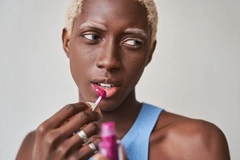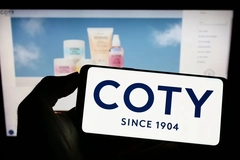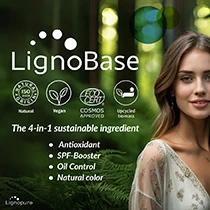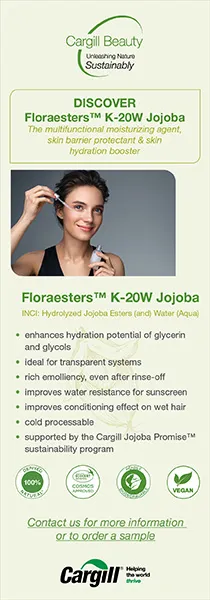Cruelty-free beauty: Animal-free testing demand surges as alternative methods are developed

29 May 2023 --- European citizens are pushing back at an EU directive to bring back animal testing for cosmetics ingredients, in a move that would reverse a ban on the practice that has lasted more than a decade. New research in the field of alternative testing methods offers some promise in guiding industry toward more ethical and effective safety measures.
In an “unprecedented” milestone, the European Citizens Initiative’s (ECI) “Save Cruelty-Free Cosmetics – Commit to a Europe without animal testing” reached more than 1.2 million validated signatures in January, highlighted in a new report issued last week.
Tests on animals for cosmetic products and their ingredients were banned in Europe in 2009, and a ban on the sale of animal-tested cosmetics has been in place since 2013. However, despite the bans, the European Chemicals Agency is demanding new tests on animals for ingredients – even those used exclusively in cosmetics and ingredients with long-established safe use.
 The European Chemicals Agency is demanding new tests on animals for ingredients – even those used exclusively in cosmetics and ingredients with long-established safe use.“Citizens are calling on the EC to take a leadership role in the transition to non-animal science and drive a new way of thinking without animal experiments,” urges Sabrina Engel, chair of the organizing committee for the ECI.
The European Chemicals Agency is demanding new tests on animals for ingredients – even those used exclusively in cosmetics and ingredients with long-established safe use.“Citizens are calling on the EC to take a leadership role in the transition to non-animal science and drive a new way of thinking without animal experiments,” urges Sabrina Engel, chair of the organizing committee for the ECI.
“This ECI shows that EU citizens share many of this Parliament’s positions as laid out in the European Parliament Resolution,” she continues.
“We are confident that the European Parliament will help to break the cycle of harms that come with animal experimentation, by supporting once again the end of all animal testing for cosmetics, no additional animal tests for safety assessments, and a roadmap to accelerate the transition to non-animal research, regulatory testing and education.”
Upholding safety while removing animal testing
Following an initial meeting between the ECI organizers and the European Commission, the next crucial step was taken with a parliamentary hearing conducted by the Committees of the European Parliament.
An objective was aimed at initiating legislative change to prohibit animal testing for cosmetics ingredients and chemicals, under any circumstance, while still ensuring consumer, worker, and environmental protection.
During the hearing, representatives from the Commission's Directorate General for Internal Market, Industry, Entrepreneurship and SMEs expressed their commitment to ambitious efforts in reaching the long-term goal of phasing out animal testing.
Carmen Laplaza Santos, from the EC’s Health Innovations & Ecosystems unit, assured that the Commission would provide a detailed response to the Initiative by the end of July.
Science drives ethical testing
Effective, non-animal ways to ensure the safety of cosmetic products are not new science. Over 40 years ago, L’Oréal pioneered the development of human reconstructed skin that can be used to evaluate how cosmetic ingredients and products behave on human skin.
The company currently manufactures different types of reconstructed human skin in its Episkin labs in France, China and Brazil. The global beauty brand makes this technology available to governments, organizations and other companies for testing purposes.
 Over 40 years ago, L’Oréal pioneered the development of human reconstructed skin that can be used to evaluate how cosmetic ingredients and products behave on human skin.In addition to skin models, the company pilots many non-animal predictive assessment tools, such as molecular modeling, expert toxicology systems, imaging techniques and many more.
Over 40 years ago, L’Oréal pioneered the development of human reconstructed skin that can be used to evaluate how cosmetic ingredients and products behave on human skin.In addition to skin models, the company pilots many non-animal predictive assessment tools, such as molecular modeling, expert toxicology systems, imaging techniques and many more.
Shiseido, on the other hand, has been employing 3D skin model tests to determine the efficacies of its skin care ingredients. These models have proven to be a valuable alternative to animal tests in the cosmetic industry and allow reliable analyses.
Investigating the skin revitalizing properties in a trio of botanical active ingredients using this particular method, Shiseido recently succeeded in reproducing a ”thinning” phenomenon of decreasing the thickness of the dermis, which is caused by aging.
Working with a proactive urgency
The urgency to end animal testing in cosmetics and other chemical tests was reinforced by the fact that over ten million animals, including cats, dogs, rabbits, and mice, suffer each year in laboratories across Europe.
In part one of a recent PersonalCareInsights series on animal testing, it was revealed that loopholes in EU regulations mean that consumers often unknowingly purchase products that have been tested on animals.
The European public’s demand for a transition to non-animal testing methods aligns with the Parliament’s resolution in 2021, which urged the European Commission and Member States to develop a concrete plan to accelerate this transition.
Public awareness in the EU echoes a similarly growing sentiment across the world. UK policymakers recently came under scrutiny when organizations and the media aired suspicions that the government was abandoning a ban on animal testing.
Responding to this, Britain’s Cosmetic, Toiletry & Perfumery Association publicly stressed earlier this month that animal testing on cosmetic products is not being reintroduced in the UK.
Among other recent moves, the Canadian government laid out new measures in its Budget Implementation Act that reveal its cruelty-free legislation is set to pass this summer.
More than 35 cosmetics manufacturers and suppliers, industry associations and animal protection organizations linked up in February to launch the International Collaboration on Cosmetics Safety. PersonalCareInsights recently interviewed Erin Hill, president and CEO at the organization, on its latest developments.
By Benjamin Ferrer












